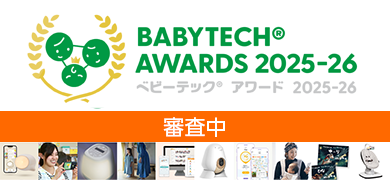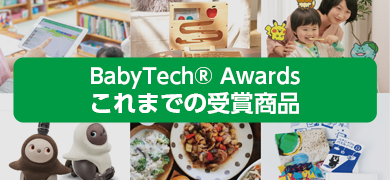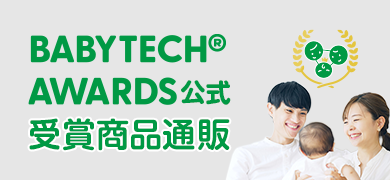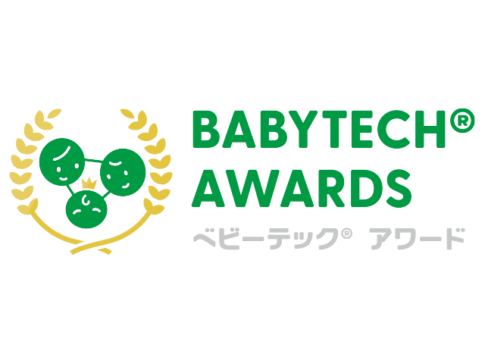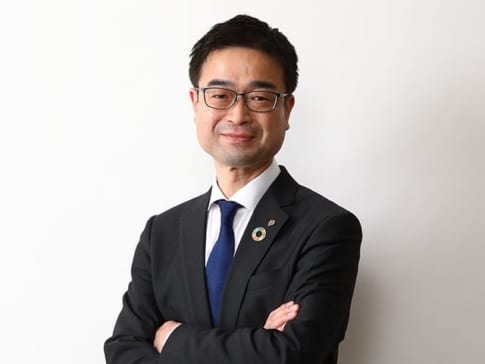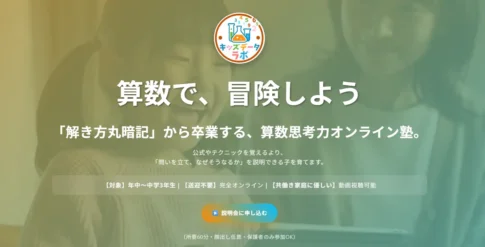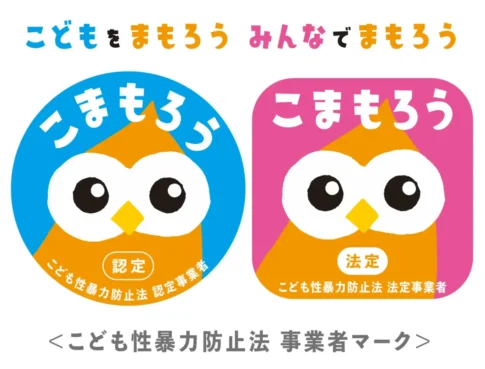- Cooking classes that foster children's spirit of challenge rather than teach cooking according to recipes
- Cooking," an experience that stimulates the five senses, helps children develop their brains.
- Services such as "lessons at home" and "pick-up option" are appreciated by families with two working parents.
(We spoke to...)
Hacksii Corporation representative director (i.e. someone chosen by the board of directors from among the directors to actually represent the company)
Mirai Takahashi
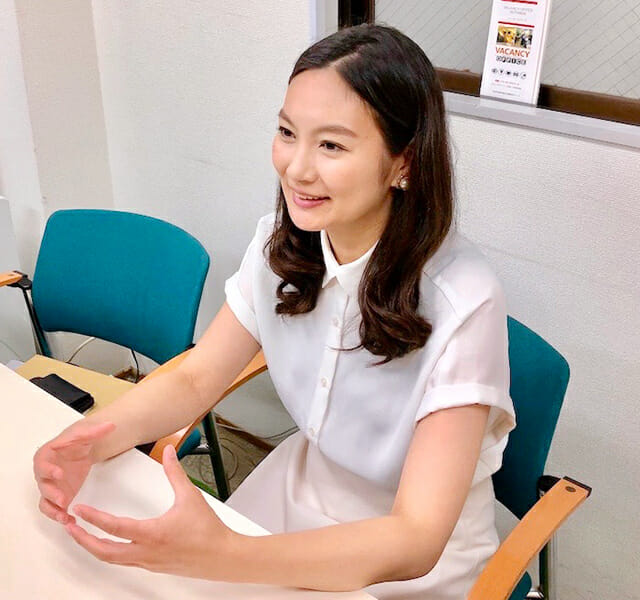
Unique "cooking class" that fosters children's "independence" and "free ideas
Editorial: Can you give us a quick overview of "Hakushino Recipes"?
Takahashi: Haxino Recipes is a cooking school without recipes that allows students as young as 3 years old to learn at home. In the coming age, technology is advancing rapidly, and education that only crams knowledge will not be able to compete with it. Therefore, we want children to acquire the "vitality" to live confidently and create a vibrant society. What is important in this context is "not to inhibit curiosity," "to respect individuality," "not to teach the right answer," and "to turn failure into learning. These are our "Four Principles of Education," which guide the behavior of our "apron teachers" (instructors of the "Haxino Recipe" cooking class) when they give lessons.
The "Hakushino Recipes" lesson begins with the selection of ingredients from the refrigerator at home. Then, together with the child, the teacher will think about what kind of dish can be made, name the final dish, and give a presentation. This lesson is characterized by Apron's "talk that elicits a lot of opinions from the child," "patient involvement that is difficult for parents," and "taking in all of the child's ideas.

For example, parents are inevitably busy, so even if they are cooking with their children, in the middle of the cooking session, they may say, "Oh my God, Mom will do it!" and may become frustrated. However, Dr. Apron patiently lets the children do everything until the end. Also, children are really original and often come up with ideas that adults would never think of, such as "I want to put prosciutto in my soup. This is also the case with parents, who will say, "That's not right!" but Mr. Apron tries to be as accepting as possible, saying, "Great, let's try it! but Dr. Apron tries to accept it as much as possible. Another strength of our service is that we can tell them "how to tie an apron" and "how to serve food" as part of "family education and manners.
For example, in a normal cooking class, you might say, "Today we are going to learn how to cut ginkgo. In our lessons, however, we think together with the children from the point of "How should we cut this ingredient? We do not tell them the correct way to cut the ingredients, but ask them to cut them while thinking together. If it is a ginkgo cut, I tell them, "This is called a ginkgo cut. It looks like the shape of a ginkgo tree! I tell them. We also emphasize the use of "sound" in cooking, because children's "range of expression" will expand dramatically if they can express the various sounds made when cooking ingredients, such as "sizzle," "jwa-jwa," "crackle," and "sizzle.
We call the entire content of these lessons "Kitchen Studies," and we also create original teaching guidelines according to the growth of the children. We have measured that children's brain activity during "Kitchen Study" is more than twice that of "passive activities" such as "watching a movie.
Editorial: So children can take the lead and use their own brains a lot.
Takahashi: That's right. The current service includes a choice of 1 to 4 lessons per month, and you can reserve the date of your choice on the web. On the day of the lesson, an après-sensei will visit your home for the lesson. This includes the use of options such as "picking up your child from daycare, etc.," "appointing an apron teacher," and "sending a video presentation about the food you made. If you use the option for "Apron Sensei" to pick up your children from daycare centers or school facilities, you can come home when the cooking lesson is over and dinner will be ready! Parents are also pleased with the fact that they can have more time to spare at .......
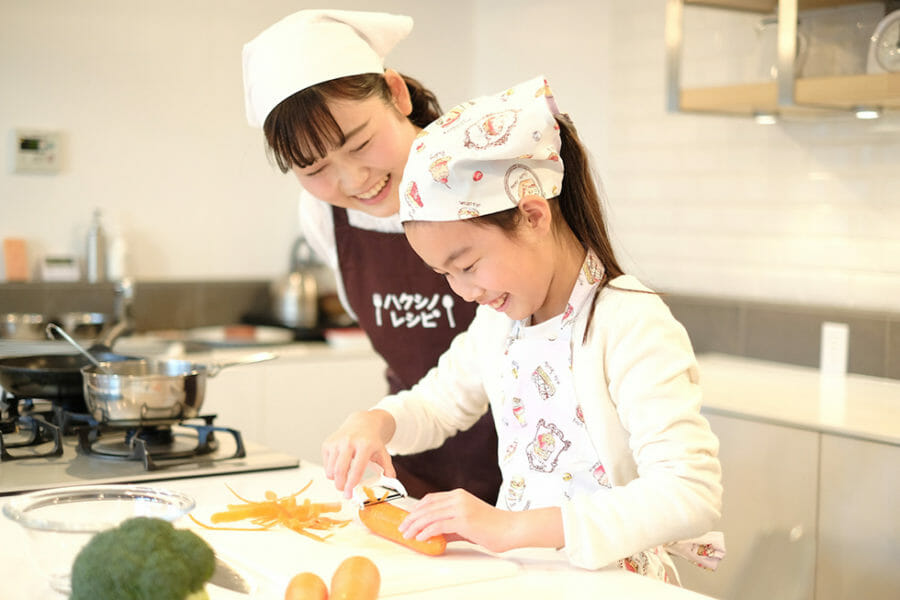
Editorial: How many "apron teachers" are there?
Takahashi: There are approximately less than 15 people. Currently, our "apron teachers" are mainly certified dietitians and nutrition educators, but we do not have a specific qualification requirement as we have a training program. Our emphasis is not on qualifications, but on communication skills, such as the ability to build good relationships with children. We ensure the quality of our lessons by first conducting interviews, accompanying senior "après-sensei" in their lessons, and finally, only after passing a "practical test" are they allowed to provide lessons.
The idea for the "cooking class" was born out of early childhood education that emphasizes "brain development."
Editorial: Can you tell us how you started Haxino Recipes?
Takahashi: Hacksii Inc. was founded in October 2018, and we started "Haxino Recipes" the following month in November.In June 2019, we released "Hacrepi PLUS+", an owned media to tell about "Haxino Recipes".
Before starting this business, I was an instructor at an early childhood school that focused on "training children's brains. At that time, I saw that as the children grew older, they became more and more uniform, believing that they had to give the correct answer and that they must not make mistakes. This was very disappointing, and I felt that Japan would have no future unless these values were changed, which led me to start "Hakushino Recipes.
Many parents feel that they do not know what kind of education to give their children as the world is going to change rapidly. They also feel that they should not give the right answer ......, but they are troubled by the fact that they tend to give their hands and mouths to their children. That is why we want to encourage children to challenge themselves and express their own opinions without fear of mistakes or failures through the cooking experience.

There are two reasons why we are talking about "cooking" here: First, through cooking, we can experience all the essential elements of "children's brain development" that I learned at the early childhood school where I worked. Second, in order to change the value system that says "you have to get it right," you have to experience that "it is okay to fail" and "failure can be turned into learning. In this respect, in cooking, there is no "right answer" or "failure," and new things can be created depending on ideas. From these two axes, we thought that "cooking" would be the best way to help children acquire the skills they will need in the future.
Editorial: It is true that it is difficult to use all five senses in a regular preschool classroom.
A completely new "cooking experience" brings about significant changes in children
Editorial: What kind of feedback have you received from users of Haxino Recipes?
Takahashi: We have received comments such as, "I didn't know what I could do to help my child become an 'adult who can feed himself,' but the cooking lessons at Haxino Recipes helped my child develop a 'grounding' and a 'challenging spirit,'" and "My child's creative thinking has been nurtured. Then there was a child who was very "perfectionist" and "couldn't draw on a blank piece of paper (because he might not be able to draw well)," but after taking lessons for about six months, he said, "I can now draw on a blank piece of paper! He said, "I can now draw on a blank sheet of paper! He also said that he became more and more "confident." In fact, it was this child who came up with the idea of "cured ham in soup" as mentioned earlier. At first, he asked, "What kind of ingredients are in 'miso soup'? I want to make it exactly like that," but now she is able to think completely the opposite way.

In other satisfaction surveys using the indicator of "whether or not they would like to introduce the program to their acquaintances," we received ratings several times higher than those for general lessons. The overwhelming majority of families using our services are "working parents," and most of them are interested in "expanding their children's potential" rather than "improving their school grades. Some of them also told us, "Children often show expressions to 'Apron Sensei' that they would not show to their parents, and I myself am learning how to relate to them as a parent.
Editorial: That is wonderful. Are there any other interesting menu items that the children have come up with?
Takahashi: The "Tokoroten Soup" was interesting. We only found this out after we tried it, but in fact, "Tokoroten" melts and disappears when heated. In addition, our on-demand media, "Hakurepi PLUS+," features a series of unique menus created by children under the title of "Apron Kids' Invention Recipes. Please take a look.

To bring "Hakushino Recipes" to the nation.
Editorial: Can you tell us about the future of "Haxino Recipe"?
Takahashi: Currently, the service is available only in the Tokyo area, but in the medium to long term, we would like to develop the service into a platform so that lessons can be offered nationwide. In the medium to long term, we would like to create a platform to offer lessons nationwide.
<After the interview
The children's enjoyment in the lessons and the uniqueness of the finished dishes made me wish I could let my own child experience it when he or she is able to hold a knife. ...... On the other hand, the curriculum and guidelines behind the lessons, which seemed fun for the children, were very meticulously thought out, and I could sense the company's belief that "early childhood education is what will change the world. I hope that many children throughout Japan will be able to take lessons from Hakushino Recipes, which helps children to think for themselves and speak out vividly.
Haxino Recipe Official Web Site
https://hakushi-no-recipe.com/
Hakurepi PLUS+ Home Page
https://hakurepi-plus.com/

